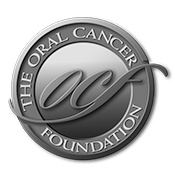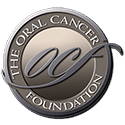Understanding cancer research funding in the US.
In order to understand OCF’s philosophy of who and what we give funding to, and some sense of the what the foundation can and can not do, (mostly based on our size as an organization, and the number of people impacted or interested in oral cancer who choose to financially support us), some basic background should be laid out.
When most people think about research, they are envisioning the people in white lab coats, in a room full of petri dishes and sophisticated laboratory equipment, lab animals, and the like. But in reality it is so much more. Cancer research starts at the lab bench for sure, but from there many more steps have to take place. Translational studies come next, safety studies are an integral part of moving into human trials, multi stage human clinical trials occur, and if everything pans out perfectly, the FDA approves the end product (if that was the original goal of the study, sometimes it is just the advancement of an incremental step in knowledge.) and all this yields an approved treatment therapy. Every step in this long chain of events is research; each stage is costly to accomplish, and there is a high degree of “that didn’t turn out like we expected ” associated with the work. Each effort to move our knowledge forward starts with a question, a hypothesis, involves extensive (and costly) pre planning, the establishment of controls which will ensure proper scientific methodology is adhered to, and has a high rate of failure. That is scientific research. But please consider that even those failures yielded useful information, if not exactly what was hoped. Our knowledge was increased, even by a negative outcome. Because there are more failures than successes, there has been a tendency for large funders like the government, to lean towards funding small ideas rather than a breakthrough idea. We believe this is flawed thinking, but they seem to want winning small incremental movement, which has fewer failures, than to take a chance on a idea that could change everything. While this philosophy may make someone who looks at return on investment happy, it does not yield breakthroughs. Cancer research seems to move at glacial speeds. Much of what is funded is also a very long view of what we need to know. This more esoteric cancer research is less interested in something with immediate impact, but building a base of data / knowledge that future explorers of “applied” science questions can draw from to solve specific problems.
If all that isn’t enough in the way of obstacles to progress, remember that cancer is a multitude of individual diseases; hundreds, not just a singular disease, so we don’t have just one enemy to kill. To make that another level of complicated, consider that even in affected individuals with the exact same cancer (e.g. oral cancer for instance), they individually respond differently to standard therapies. As much as we are all the same, we are also very unique biological entities, and we can thank our grandparents and linage for the genetic make up that makes us so. On a molecular basis this means that each cancer, in each individual, is slightly different problem to solve. This is why we won’t have a Magic Bullet for “cancer.” So no matter how you view research, it is not a simple problem or process, and breakthroughs are not things we read about much.
Research funding dollars in the US
It is difficult to put an exact number on the dollars spent every year in the US on cancer research. After you have parsed the term research as in the previous discussion, you have to consider the various sources from which funding comes, and while that is mostly knowable, exact figures elusive and any big number is an approximation. Step one is understand that funding comes from many sources. There are three primary sources; the federal and some state governments, biotechnology/ pharmaceutical companies, and charitable donations (like yours to OCF).
So let’s look at one knowable source, the US government. The National Institutes of Health is involved in over 200 individual activities that impact American’s health. Their effort in the world of cancer is conducted mostly by the National Cancer Institute (NCI), one of their subordinate organizations, and in a minor way the cancer that we are most interested in – oral, by the National Institute of Dental and Craniofacial Research (NIDCR). Since the sequester (as a result of the current economic situation in America) the budgets for both the organizations have decreased some, but between 2005 and 2013 the budget allotment for cancer research was about 4.8 billion dollars a year. When you look at that number in terms that speak to the oral cancer issue, about 14 million dollars was spent in 2012 on oral cavity cancers, a little over 4 million on oropharyngeal/pharynx cancers, and 600k on salivary gland cancers. So roughly 18.5 million dollars impacted our disease. Oral / oropharyngeal cancers are a sub category of head and neck cancers, and the largest disease in the group. While not part of the oral cancer financial issue to parse out the other major head and neck cancers so that the full scope of funding can be considered, esophageal cancer received about 28 million, thyroid about 16.5 million, and cancers of the larynx about 200k. (Information drawn from the NCI website in 2/2014).
More than 40 years after president Nixon declared the “war on cancer” the NCI has spent about 90 billion on cancer research. And during that period there have been some small declines in many cancers, with the annual death rate from cancer being reduced by about 1% per year. While that is progress, it’s probably not cause for a huge celebration. Cancer is still responsible for one out of every four deaths in America. To keep this in perspective, it’s not all bad news historically. In the 1940’s no one survived cancer. Now, childhood cancers have a 5 year survival of between 60 – 95%, and adults 50 – 68% depending on type of cancer and considering all stages at time of discovery. But the government alone didn’t cause the change.
The second source of cancer research dollars comes from the private sector pharma companies, and there’s roughly 200 or so of them. Their spending on cancer research dwarfed the government’s, and was estimated over the last few years at about 50 billion dollars a year.
There are about 250 non-profit organizations in the US dedicated to cancers. A few are really of significant size like the American Cancer Society or some of the breast cancer organizations, but the bulk of them a small entities with a very focused view, very small budgets, and OCF is one of them. Together these organizations have budgets of about 2.2 billion dollars a year. ACS alone accounts for about half of that number. But even so, the amount spent by them on research is only a small portion of their budget, and we have not been able to identify any research that was paid for by them in the oral cancer world. Obviously since most of the rest are targeted to a specific disease, oral cancer is not getting any high number funding from them either. But even though the smallest of the three means to fund cancer research, private individual giving has yielded some important results in all cancers, and should not be discounted when you look at the big picture. When you consider getting a cancer of small incidence the proper attention, the non-profit entities make a huge difference – not only through their direct sponsorship of research, but through their efforts to lobby the bigger players into funding work in their specific disease.
So the pathway to answers comes from researchers at both private and public institutions, who apply for grants from all of these sources, peer review publish their findings, and our knowledge and treatment philosophies an capabilities moves forward.
Research funding – where does the money go and why?
Historically there have been very identifiable reasons that dollars go into different components of this paradigm, and different diseases.
- Groundwork in a particular cancer has been accomplished. It is very hard to raise funds for new ideas, or for little researched cancers, because no progress has been previously made that can be built on. In essence new ideas have a lesser chance of producing a return on investment. Preliminary data that can be built on helps funders believe that the new work will yield useful information.
- Widespread scientific rewards can be realized from a seemingly non related cancer exploration. Work in one area of cancer research occurs, perhaps in a low incidence cancer, because of some belief in a commonality exists which will generate benefits other more common high incidence cancers. As research enters more into the world of genomics and proteomics this gathers more validity.
- There is money to be made from the work. Especially in private pharmaceutical and medical companies this is the driver. They routinely spend more on the big incidence cancers, as the opportunity for return on their investment is greater when a discovery is made in a disease that has a large number or people that will be paying for the use of that drug, treatment, etc. While on the surface this seems cold, profit motive has yielded amazing results.
- A non-profit exists to support a particular disease. This drives things through several pathways. The first is that more attention, both public and institution based, is paid to the disease. Non-profits spend a great deal of time speaking to the public about their disease to raise awareness. They reach out to strategic partners in education, treatment, and private sector to work on solutions that impact their disease demographic. They directly raise donations to help pay for advancements in their disease. They lobby the existing large government and private sector funders of cancer research to invest more robustly in their specific disease. These are all activities that The Oral Cancer Foundation is constantly engaged in.




